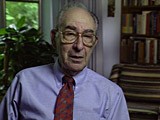You searched for: 5G基站源码搭建定制开发【TG电报:@EK7676】平台包网搭建5G基站源码搭建定制开发【TG电报:@EK7676】平台包网搭建4FSLQ5sCiw
<< Previous | Displaying results 11-20 of 449 for "5G基站源码搭建定制开发【TG电报:@EK7676】平台包网搭建5G基站源码搭建定制开发【TG电报:@EK7676】平台包网搭建4FSLQ5sCiw" | Next >>
-
Ernest G. Heppner describes arrival in Shanghai
Oral HistoryErnest's family owned a factory that made matzah, the unleavened bread eaten during Passover. In February 1939, three months after Kristallnacht (the "Night of Broken Glass" pogroms), Ernest and his mother fled to Shanghai, one of few havens for refugees without visas. His father and sister stayed behind in Germany; they perished during the Holocaust. A brother escaped to England. Ernest and his mother found work in Shanghai. In 1947, he came to the United States with his wife, whom he met and married in…
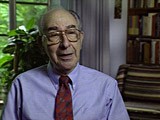
-
Page 4 of International Military Tribunal program
ArtifactFourth page of a list of defendants at the International Military Tribunal at Nuremberg. This material appears in a mimeographed program booklet distributed at the IMT. This page includes: Hjalmar Schacht, Karl Dönitz, Baldur von Schirach, Fritz Sauckel, and Albert Speer, along with brief biographical information for each.
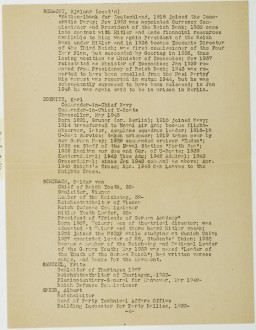
-
Page from Earl G. Harrison's diary entry describing postwar Linz
DocumentPage from Earl G. Harrison's notebook, recording his impressions of Linz, Austria, while on a tour of displaced persons camps in 1945.

-
Page from volume 5 of a set of scrapbooks documenting the German occupation of Denmark
ArtifactPage from volume 5 of a set of scrapbooks compiled by Bjorn Sibbern, a Danish policeman and resistance member, documenting the German occupation of Denmark. Bjorn's wife Tove was also active in the Danish resistance. After World War II, Bjorn and Tove moved to Canada and later settled in California, where Bjorn compiled five scrapbooks dedicated to the Sibbern's daughter, Lisa. The books are fully annotated in English and contain photographs, documents and three-dimensional artifacts documenting all…
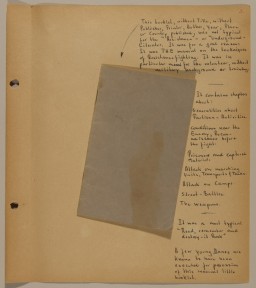
-
Page from volume 4 of a set of scrapbooks documenting the German occupation of Denmark
ArtifactPage from volume 4 of a set of scrapbooks compiled by Bjorn Sibbern, a Danish policeman and resistance member, documenting the German occupation of Denmark. Bjorn's wife Tove was also active in the Danish resistance. After World War II, Bjorn and Tove moved to Canada and later settled in California, where Bjorn compiled five scrapbooks dedicated to the Sibbern's daughter, Lisa. The books are fully annotated in English and contain photographs, documents and three-dimensional artifacts documenting all…
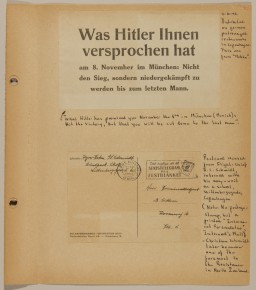
-
Ernest G. Heppner describes learning about the Holocaust and the fate of his relatives
Oral HistoryErnest's family owned a factory that made matzah, the unleavened bread eaten during Passover. In February 1939, three months after Kristallnacht (the "Night of Broken Glass" pogroms), Ernest and his mother fled to Shanghai, one of few havens for refugees without visas. His father and sister stayed behind in Germany; they perished during the Holocaust. A brother escaped to England. Ernest and his mother found work in Shanghai. In 1947, he came to the United States with his wife, whom he met and married in…

-
Ernest G. Heppner describes the Shanghai ghetto and its Japanese overseer
Oral HistoryErnest's family owned a factory that made matzah, the unleavened bread eaten during Passover. In February 1939, three months after Kristallnacht (the "Night of Broken Glass" pogroms), Ernest and his mother fled to Shanghai, one of few havens for refugees without visas. His father and sister stayed behind in Germany; they perished during the Holocaust. A brother escaped to England. Ernest and his mother found work in Shanghai. In 1947, he came to the United States with his wife, whom he met and married in…

-
Page from volume 5 of a set of scrapbooks documenting the German occupation of Denmark
ArtifactPage from volume 5 of a set of scrapbooks compiled by Bjorn Sibbern, a Danish policeman and resistance member, documenting the German occupation of Denmark. Bjorn's wife Tove was also active in the Danish resistance. After World War II, Bjorn and Tove moved to Canada and later settled in California, where Bjorn compiled five scrapbooks dedicated to the Sibbern's daughter, Lisa. The books are fully annotated in English and contain photographs, documents and three-dimensional artifacts documenting all…

-
Page from volume 5 of a set of scrapbooks documenting the German occupation of Denmark
ArtifactPage from volume 5 of a set of scrapbooks compiled by Bjorn Sibbern, a Danish policeman and resistance member, documenting the German occupation of Denmark. Bjorn's wife Tove was also active in the Danish resistance. After World War II, Bjorn and Tove moved to Canada and later settled in California, where Bjorn compiled five scrapbooks dedicated to the Sibbern's daughter, Lisa. The books are fully annotated in English and contain photographs, documents and three-dimensional artifacts documenting all…
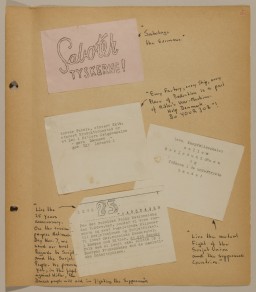
-
Ernest G. Heppner describes the random nature of receiving passes to enter and exit the Shanghai ghetto area
Oral HistoryErnest's family owned a factory that made matzah, the unleavened bread eaten during Passover. In February 1939, three months after Kristallnacht (the "Night of Broken Glass" pogroms), Ernest and his mother fled to Shanghai, one of few havens for refugees without visas. His father and sister stayed behind in Germany; they perished during the Holocaust. A brother escaped to England. Ernest and his mother found work in Shanghai. In 1947, he came to the United States with his wife, whom he met and married in…
